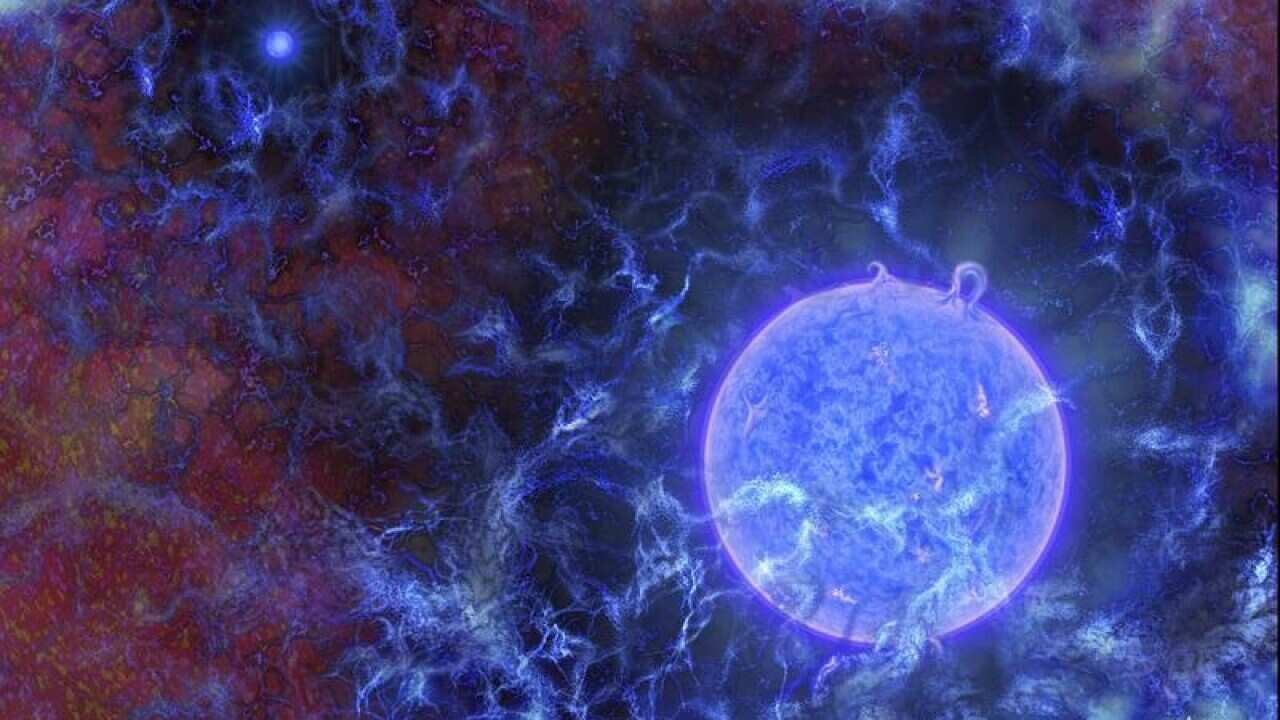A high-tech antenna in a whisper-quiet part of outback Western Australia has enabled scientists to make a groundbreaking discovery about when stars first lit up our universe.
A team of American scientists used a small antenna to pick up radio wave signals from the time the first stars formed, a discovery hailed by astronomers as important as the detection of gravitational waves.
In a research paper published on Thursday in the journal Nature, the scientists say the signals indicate the first stars formed 180 million years after the universe began with the Big Bang 13.8 billion years ago.
"It is unlikely that we'll be able to see any earlier into the history of stars in our lifetimes," said Dr Judd Bowman, the astronomer from Arizona State University who led the study.
"This project shows that a promising new technique can work and has paved the way for decades of new astrophysical discoveries."
Dr Bowman and his team turned to the CSIRO's isolated Murchison Radio-astronomy Observatory, 600km northeast of Perth, for help with their 12-year quest to discover when stars first glimmered.
The observatory falls within the official Australian Radio Quiet Zone covering about 260km of WA, making it an ideal site for radio astronomers because there's much less chance of interference from man-made devices such as mobile phones interrupting their attempts to listen into signals coming from space.
The antenna used by Dr Bowman was roughly the size of a refrigerator, but powerful enough to detect faint signals from hydrogen gas that surrounded the first stars.
Scientists believe when stars first turned on they emitted ultraviolet light, which was absorbed by the hydrogen gas.
The gas then cooled and cast a shadow on what's known as the universe's cosmic microwave background, an ancient light released at the time of the Big Bang.
That change in the hydrogen gas was detected in the form of a dip in the intensity of radio waves picked up at a low radio frequency by Dr Bowman's antenna sitting in the dirt at Murchison.
"We see this dip most strongly at about 78 megahertz, and that frequency corresponds to roughly 180 million years after the Big Bang," said study co-author Alan Rogers, from the Massachusetts Institute of Technology.
The CSIRO's Antony Schinckel, who oversaw the development of Murchison, said the discovery was the result of "the perfect combination of an extremely well-calibrated instrument on the perfect site".
"This little tiny signal they saw was one of the holy grails of the low frequency radio astronomy world for several decades ... and they were able to find it with this little antenna," he said.
CSIRO astronomer Keith Bannister said the discovery will help scientists better understand how the universe evolved.
"We want to know how those stars collected into galaxies and that sort of thing," he said.
"It's much like trying to understand how someone starts as a baby and grows into an old person."
Share

